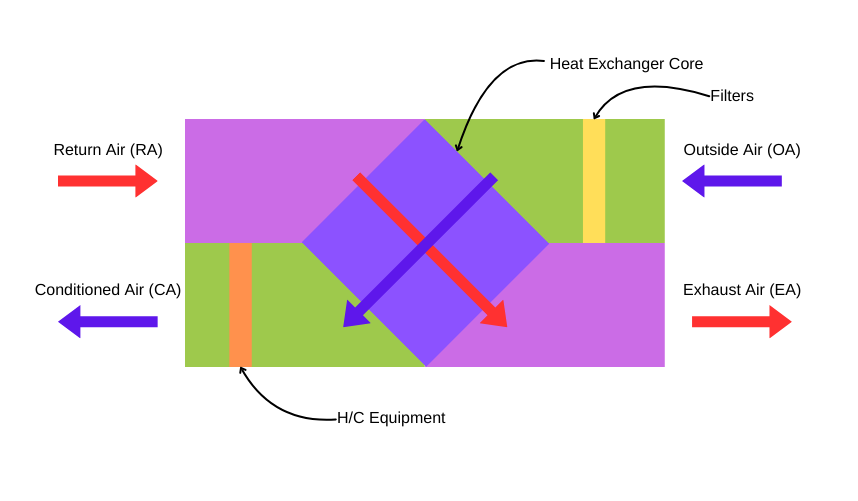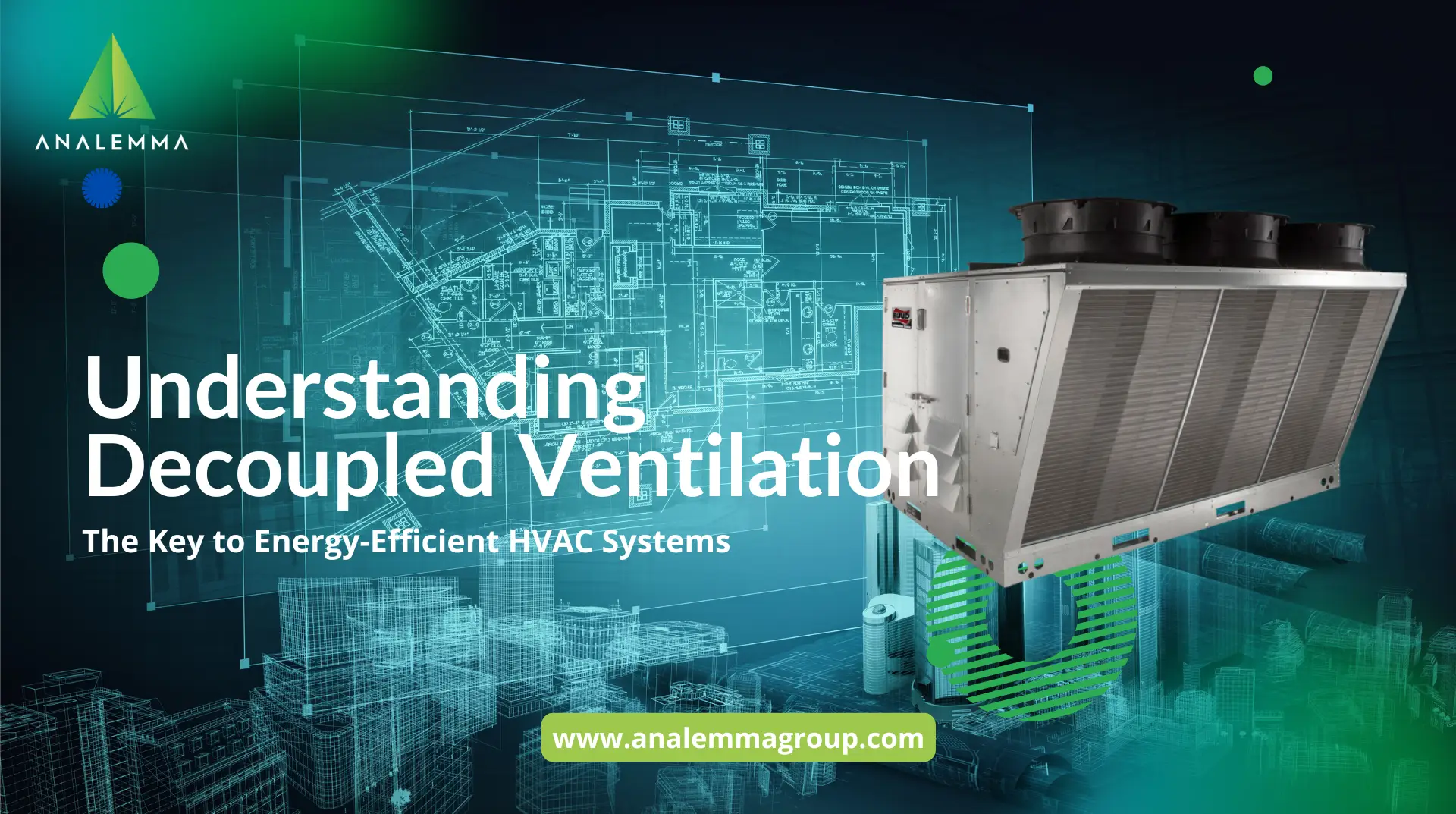While working with one of my clients from the Middle East, I noticed some hesitation from their side when I pitched using a decoupled ventilation strategy to maximize the energy savings for the project. Due to the lack of knowledge of the subject matter, not a lot many consultants prefer this strategy to decouple the ventilation system and the end zone heating/cooling (H/C) system. Hence, I would make an attempt to put together what has worked for me using this strategy and how properly designed decoupled ventilation systems can help reduce the energy consumption of your heating, ventilation and Air-Conditioning (HVAC) system.
Ways to decouple ventilation:
Dedicated Outdoor Air System (DOAS) with an energy recovery equipment:
- In this strategy an air handling unit (AHU) conditions outside air (also called as fresh air) with help of energy recovery devices. Additionally, H/C equipment is provided in the AHU to meet the leaving air conditions form the AHU.
- There are generally two pieces of equipment that the design engineers can consider for energy recovery: Fixed plate heat recovery core and enthalpy wheel.
- I personally prefer the fixed plate heat recovery core due to the fact that it has non-moving parts which means less failure and maintenance.
- Although an enthalpy wheel is a rotating piece of equipment powered by a motor, that does not mean that the enthalpy wheel gets left out since not only using the enthalpy wheel reduces the AHU footprint but also gives better control over the moisture content of the leaving air from the AHU.
- The outside air enters the DOAS filter section then to the energy recovery equipment to the H/C section before being delivered to the end zone.
- The return air from the end zone is routed back to the DOAS. This air moves from the energy recovery equipment of the DOAS before being exhausted to the outdoors.

Makeup air unit (MAU) with exhaust fans:
- Although the term MAU is predominately used in the commercial kitchen industry to make up for the air being exhausted from the kitchen exhaust hood, a MAU can also be considered as a decoupled ventilation strategy.
For this article, we will keep our discussion limited to the DOAS strategy.
Following are some strategies that have given me good results in the past while specifying DOAS on my projects:
- Dehumidification of the outdoor air needs to be done at the DOAS itself
- Incoming outdoor air typically contains upward of 80% of the building’s yearly dehumidification load. If this load is taken care of by the DOAS the end zone’s H/C equipment can be optimized to a greater extent since all they have to serve would be the people, envelop and equipment loads.
- Design the DOAS to handle most of the latent load of the building
- After leaving the DOAS, if the conditioned outdoor is “drier”, it helps to take care of the internal latent loads, such as people latent load so that the end zone H/C unit works to meet only the sensible load requirements.
- Supply air at room neutral or a bit cooler than neutral
- This will help in saving energy since the outdoor air H/C loads do not need to be dramatically reduced to serve any of the end zone heat H/C loads except for the latent loads.
- Utilize demand control ventilation for high occupancy density areas for increased efficiency out of the DOAS
- For buildings such as offices, hotels or community centres that might have spaces such as conference rooms and training areas, which tend to operate for only a certain time of the day, the demand control ventilation design helps to reduce or stop the outside air supply to these spaces when the occupancy of the room is not reduced or the rooms are not in use. CO2 monitors can be leveraged to implement this strategy.
- Ducts are relatively smaller for DOAS hence take advantage of low velocity duct system
- Due to the fact that the ducts from the DOAS are only meant to handle the outside air, the size of the ducting is generally smaller as compared to a traditional HVAC system. This gives opportunity to size these ducts with low velocity strategy to increase the energy efficiency.
- ducts with low velocity strategy to increase the energy efficiency.
In the end, I would like to add that although the decoupled strategy seems to be all green flags, but making sure that the DOAS is properly controlled as a part of the whole building management system (BMS) along with the end zone H/C equipment is critical to make it a winner.


